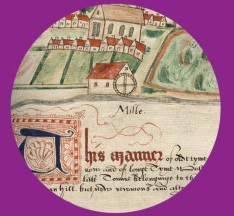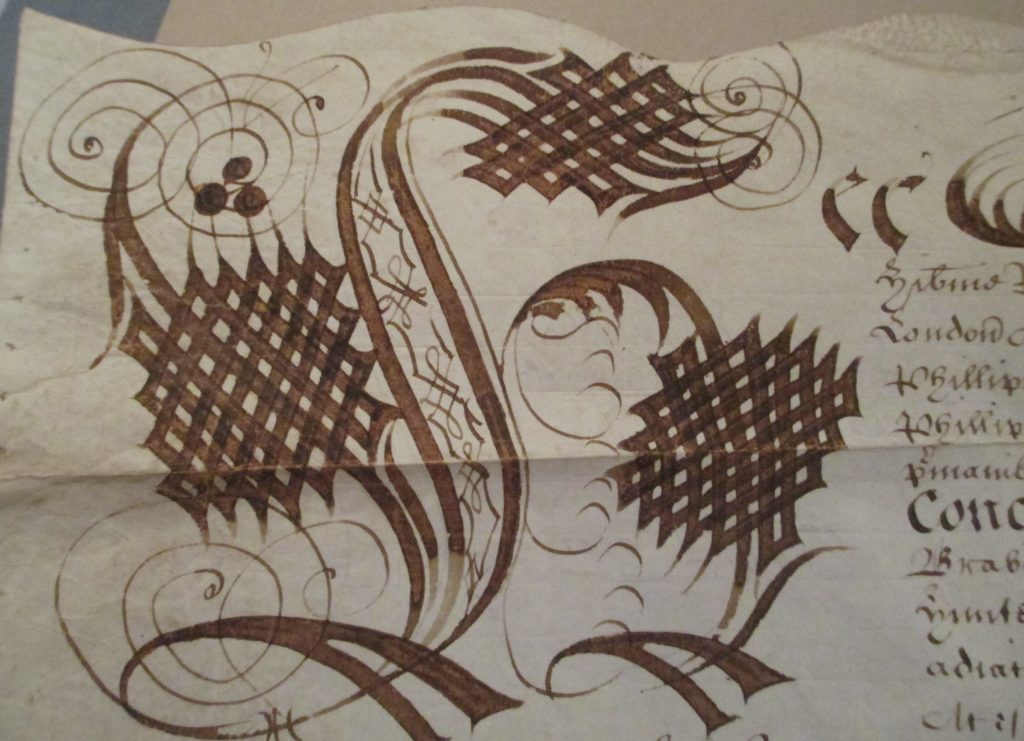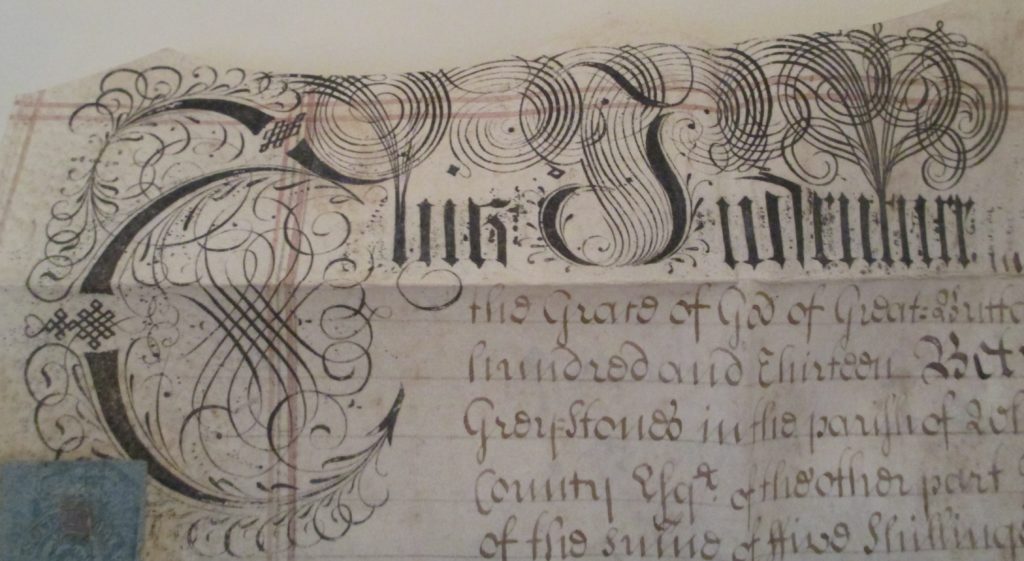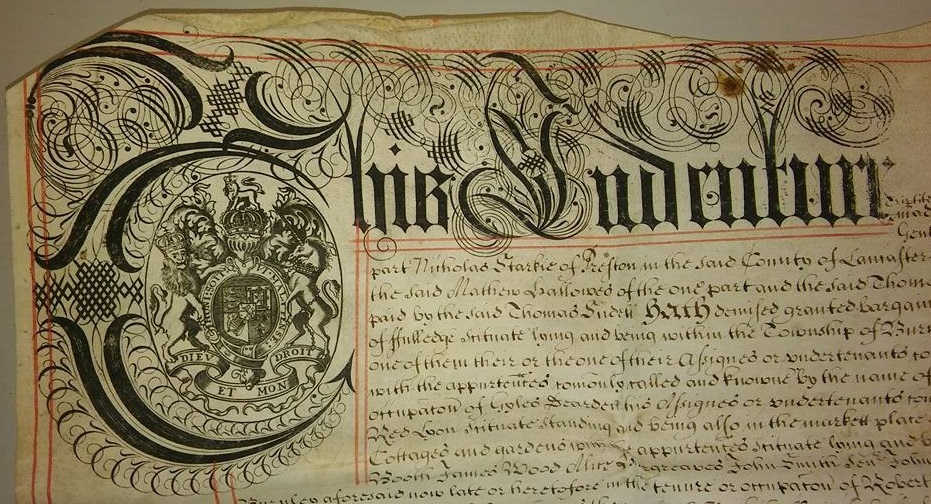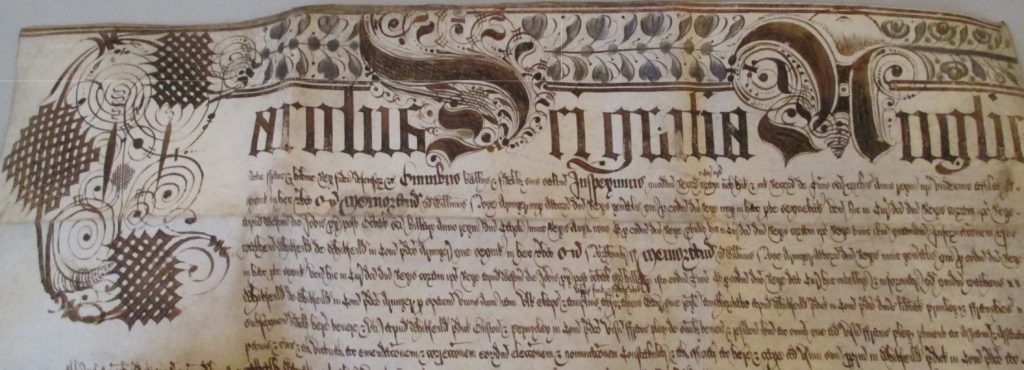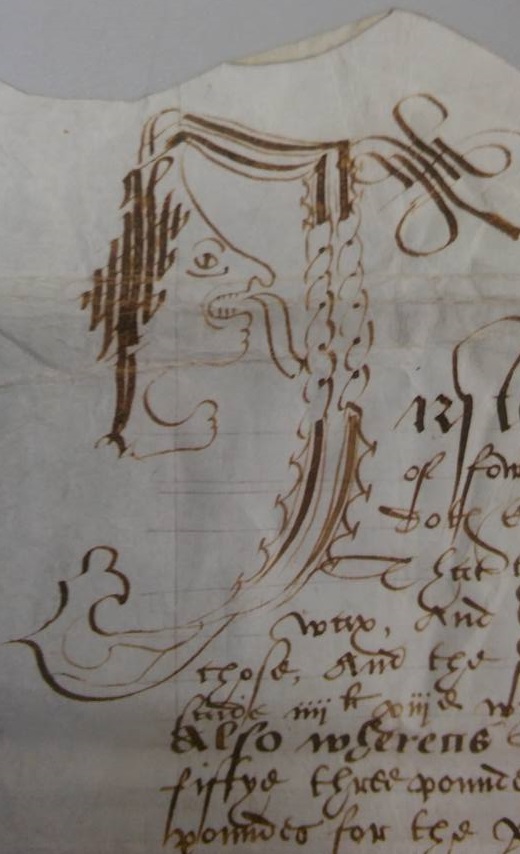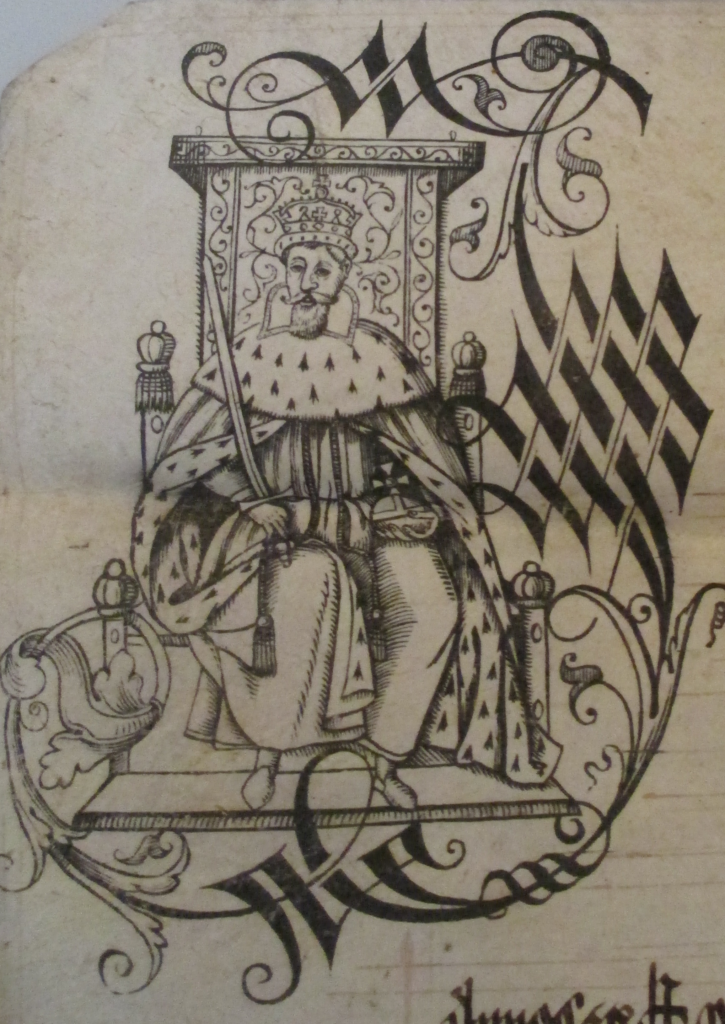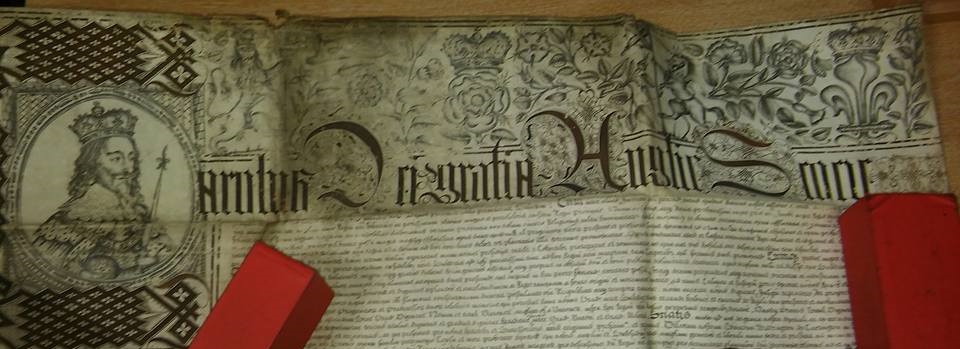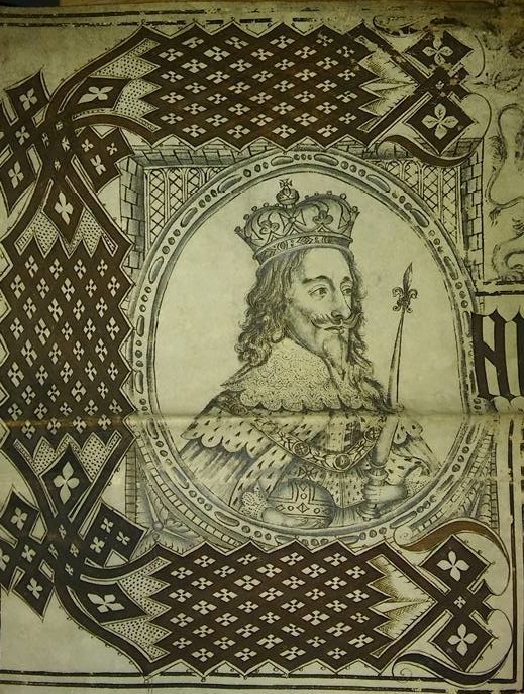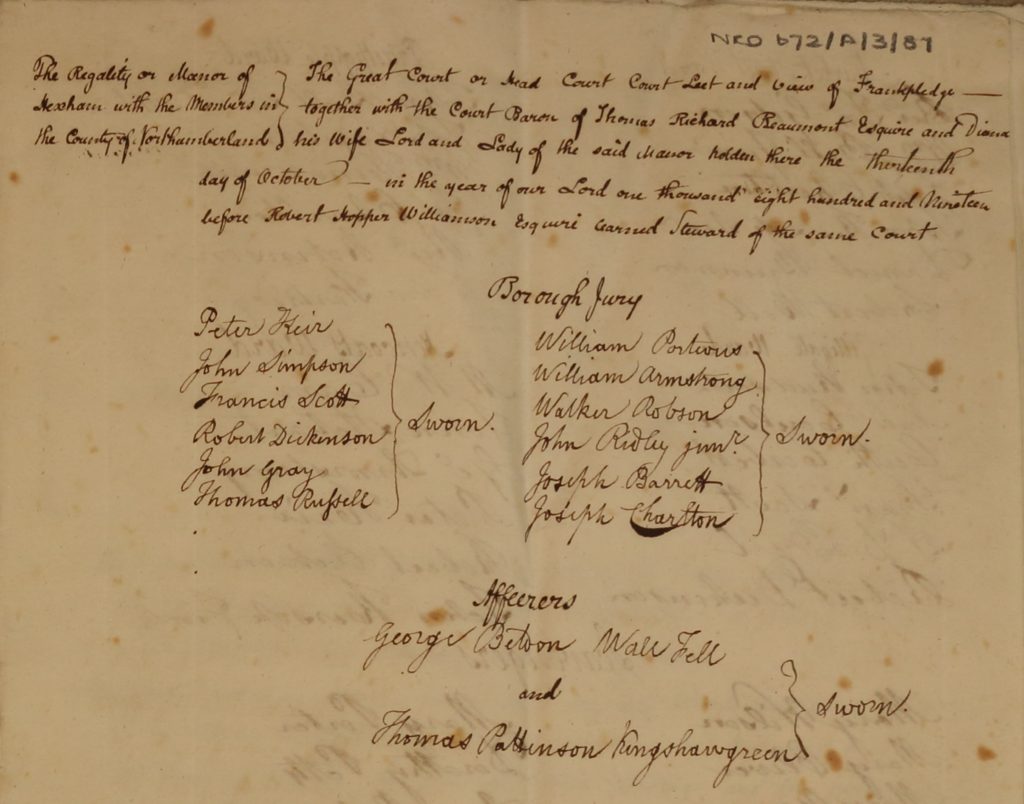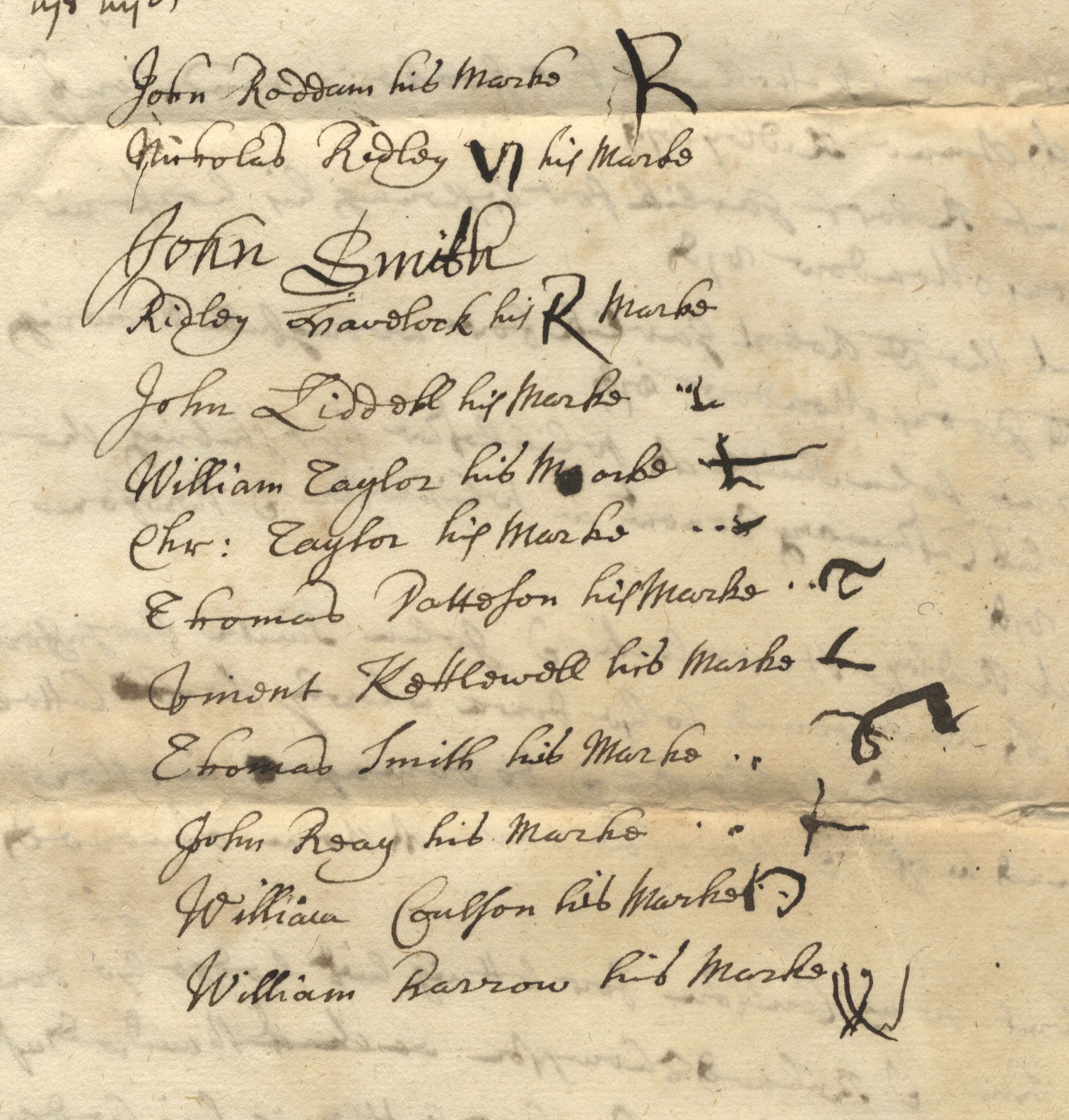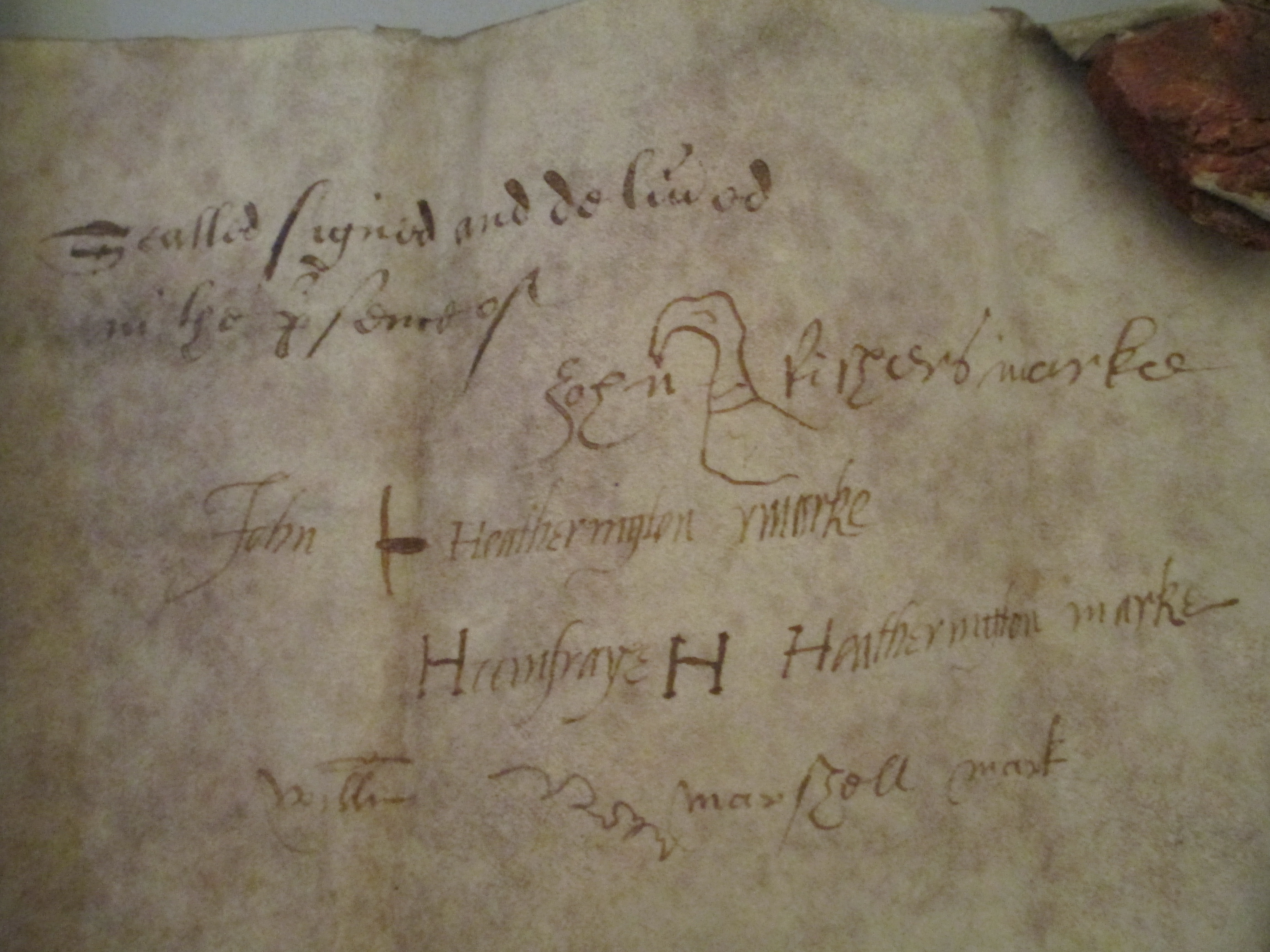Having previously looked at marks made by clerks and residents of the manors, we will now look beyond the doodles to decorative letters and drawings that are works of art in themselves. Though these had been commonly used in the medieval period their use declined through the centuries, and by the seventeenth century were reserved for a few areas of written texts, such as the legal documents like deeds. In those occasions where they remained they became less about the content of the text and more for decoration. as we go through our manorial documents we often come across examples that are eye-catching.
Below is a nice example of a letter done with shapes and swirls.
One that is a little more complicated…
More complicated still…
Or this one, from a document of Charles I, which takes it further…
This is so stylised it becomes difficult to make out the ‘C’ it represents.
However, many examples contain drawings. In the medieval manuscripts these are known as historiated initials and inhabited initials. A historiated initial relates to a picture in the letter that relates to the text, where an inhabited letter is purely decorative. The below sixteenth century example is an inhabited letter, which includes a rather unusual face. Perhaps he goes back to earlier traditions of the psalter and other illuminated works.
We start to see images of the monarch used in some documents such as deeds, and these historiated initials are very skilfully and professionally done. The monarch would be depicted in a cartouche, often attached to the first letter of their name. The earliest example we have come across is James I:
James is shown on his throne next to a stylised ‘J’. Under his cloak he appears to be shown in medieval dress. His shoes are certainly of a much older style, quite unlike the decorative heeled shoes he is usually depicted wearing. Next to the image are the symbols for England (rose), Scotland (thistle) and Wales (fleur-de-lis) joined together, illustrating that the three countries were united by his rule. The swirls turning to leaves may also hark back to an early style of decorating pages.
Next we have James’s son, Charles I.
We can see Charles I in a cartouche, surrounded with ornate patterned decoration and a panel showing roses, unicorns, and other emblems of state, with swirling rose leaves filling the space. The letters are also very ornately decorated. The image of Charles is very well drawn, and shows him with the crown, orb and sceptre.
We have also come across Charles’s granddaughter, Queen Anne. This, like many decorated examples, is an ‘Exemplification of Recovery’, which recorded the breaking or ‘barring’ of an entail (a passage of land solely down the family line), so that the land became fee simple and could be mortgaged, sold or willed to someone not in the entail. They became obsolete in 1833, but were often highly decorated with the monarch’s image and seal to show authenticity.
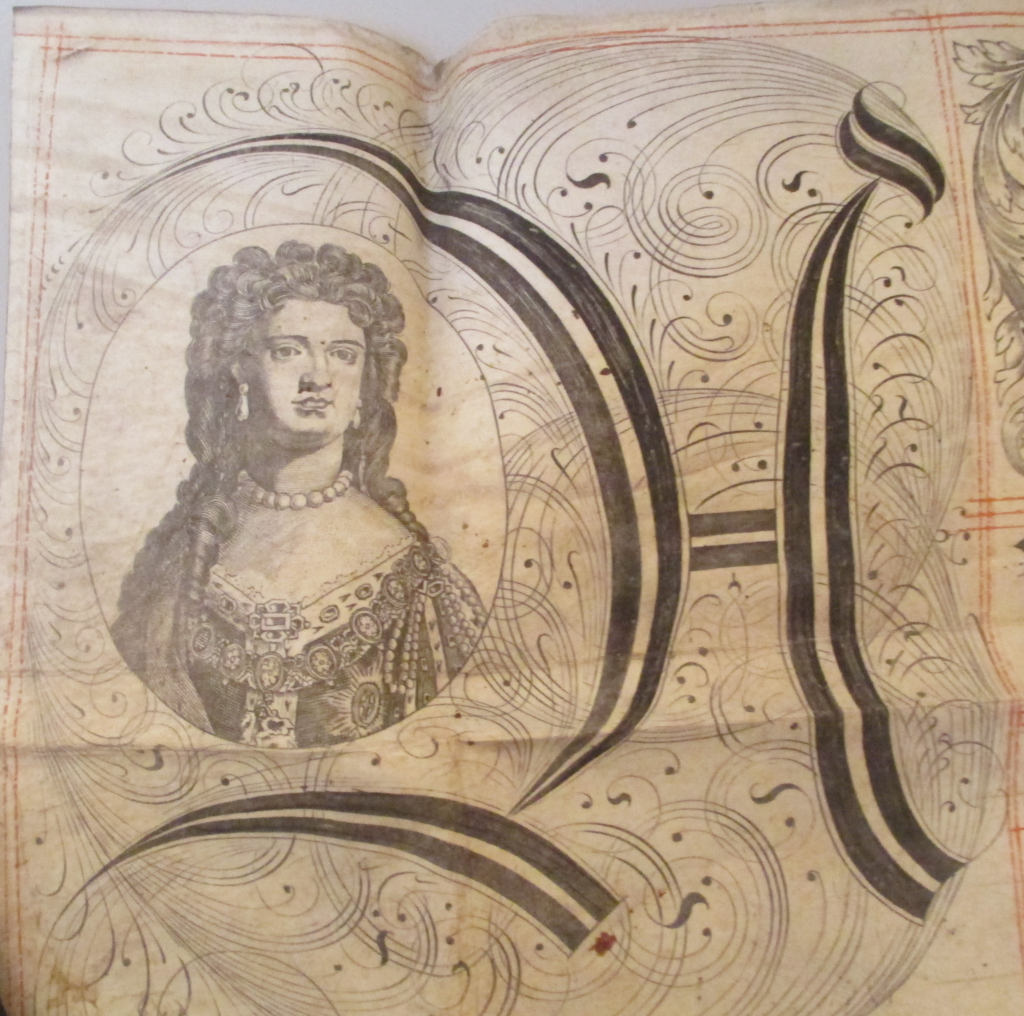
Here we see Queen Anne in a cartouche, with her hair elaborately curled and wearing a chain of jewels. The pearl necklace she wears is perhaps the one still owned and worn by the royal family today.
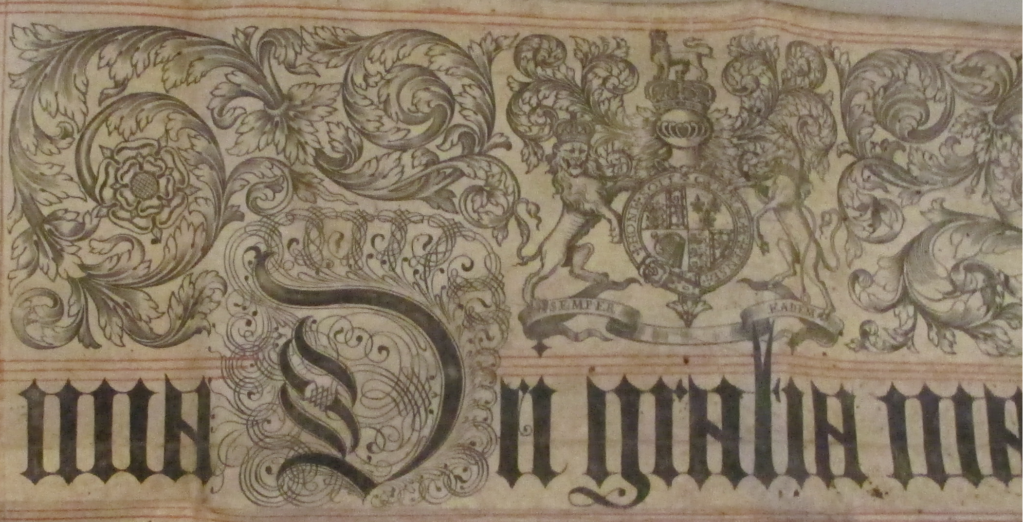
Further along the top of the same document we see a great deal of detailed decoration. The swirling leaves in Charles I’s decoration have grown to become huge scrolling acanthus leaves, which support a rose, and cover much of the top section. Between the leaves we have the Royal coat of arms of Great Britain. This has Queen Anne’s own motto beneath it – ‘Semper Eadem’, meaning ‘always the same’.
These are some examples we have come across in our research, but there are a great many more in our collection, including this beautiful and ostentatious deed from the reign of George II. The decoration transforms an ordinary legal document into something fantastic and beautiful, and gives an added value to the claim that it upholds. We will be keeping our eyes peeled for more monarchs and interesting letters as the project continues.

